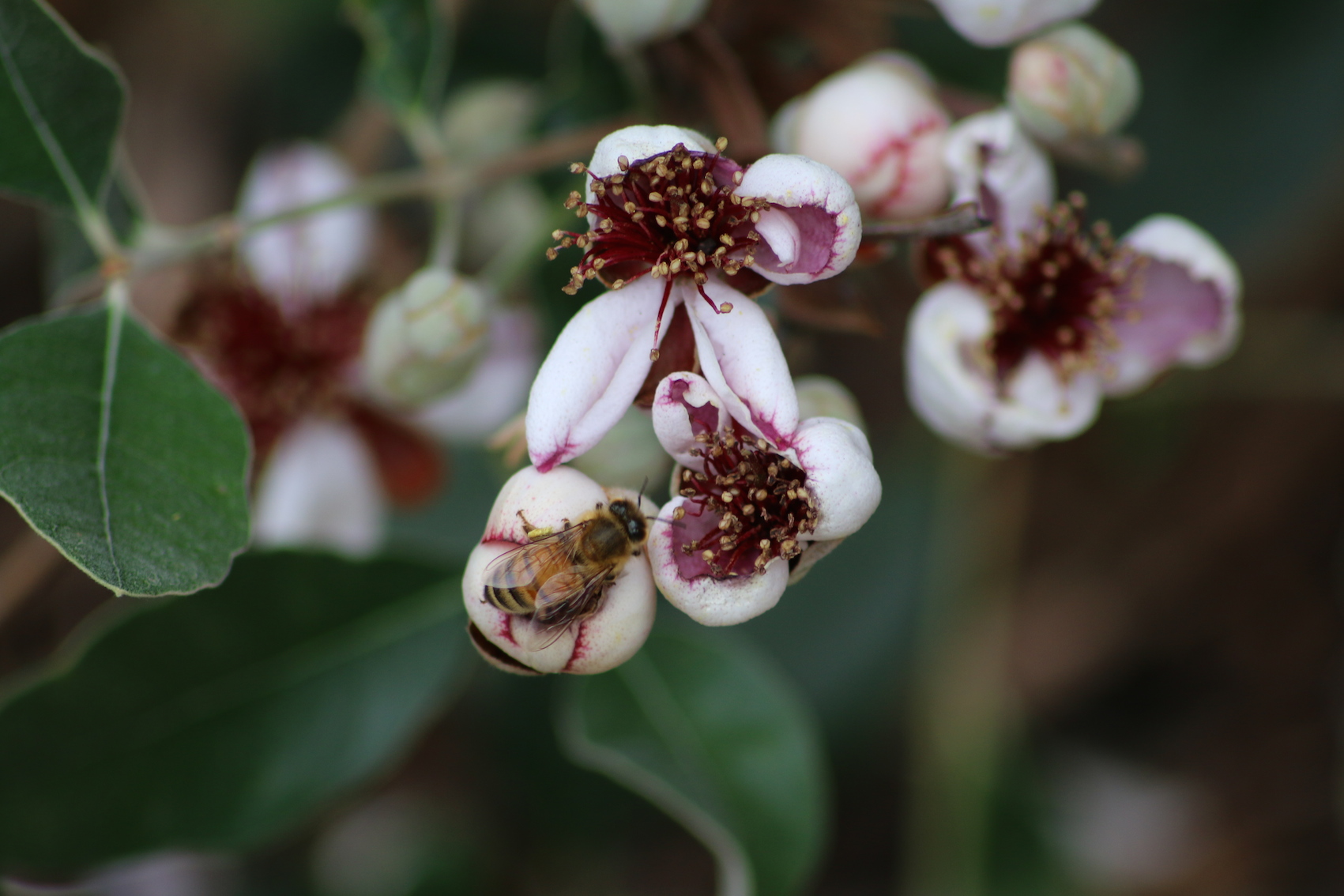Behaviour
Diet
Nectar and pollen from most flowering plants, which it collects using its tongue-like mouthparts.
Movement
It lives in large colonies, usually occupying large hollows in trees. The worker bees forage for food and aggressively defend the hive. They can also been seen fanning their wings at the hive entrance to regulate its temperature and expel its scent to help other worker bees find their way home.
A new honey bee colony is formed when the queen bee and about half the worker bees leave the hive. This is called swarming and it usually occurs from early spring to the start of summer. After leaving the original colony, the swarm will cluster on a tree branch or fallen log until scout bees from the cluster find a suitable cavity in which to set up a new hive.
Breeding
The worker bees (females that cannot mate) build the nest and maintain it. The drones (males) mate with queen bees, usually from other hives, who then lay eggs in the cells of their own hive. The worker bees look after the eggs and larvae, and forage for all the food. The drones live for only eight weeks and their only function is to mate with queen bees.
Field Guide
Improve your identification skills. Download your Honey Bee field guide here!





